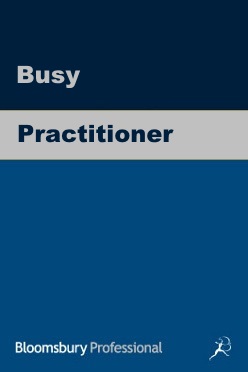Lee Sharpe, editor of the One Month In a Minute current awareness content for Bloomsbury Professional online tax subscribers, looks at the possible fall-out from HMRC’s approach to R&D claims.
Firstly, the ICAEW has advised that the new claim notification and additional information requirements that were supposed to apply to any R&D claims submitted (for any period) after 31 July 2023, have been postponed to 8 August 2023.
With an eye more to the long term, the CIOT warned at the beginning of July 2023 that HMRC’s efforts to “get tough” on perceived abuse of the regime were deterring genuine claims, and had led to “a breakdown of goodwill and trust between HMRC and taxpayers and their agents”.
Those are pretty strong words from the CIOT, let down only slightly by the omission of a reasonably important comma (I hope – unless perhaps it is being argued that HMRC’s malign influence is so great that it has succeeded in undermining the client/adviser relationship as well?).
The CIOT also asserts that HMRC is “stone-walling other genuine claimants with a bureaucratic system driving them to give up on their claims”. Now there is obviously a risk here that the CIOT might intend loud critique, but HMRC will instead hear ovation for a job well done.
The CIOT wrote to HMRC in early July 2023, to raise its concerns in detail. The letter is well worth review, if the reader is currently embroiled in a dispute with HMRC over R&D claims, and particularly if they are wondering, “is it me, or is HMRC being particularly difficult, across all claims, at the same time?”
But, dear Reader, see how many issues you can spot out of the points CIOT has raised on behalf of its members, as are summarised below, that are common to any dispute with HMRC you might have right now with HMRC – R&D or otherwise:
The CIOT also notes in its letter that HMRC’s approach has generated a significant number of formal complaints. I find myself wondering if HMRC’s performance metrics have descended to the simple ratio of:
Tax Yield: Complaints Made, or Upheld
My favourite part of CIOT’s letter is where it basically wonders if there would be any scenario in which ISBC might accept that an R&D claim were valid. Obvious candidates have been treated harshly: “Examples raised with us include the denial of R&D tax relief claims by businesses that have won the Queen’s Award for Innovation, and Oxford University spin out companies”. Kudos to HMRC for sticking to its guns: lesser mortals might have folded.
Elsewhere, the CIOT has reported that the Government has acknowledged “teething troubles” in relation to upscaling HMRC’s specialist team, but has in turn argued that technical support and specialist advice is readily available to the front line enquiry teams, within HMRC itself. And yet…
I have seen one or two of these letters from HMRC, which demand copious amounts of evidence to support a claim. They are clearly generic, with no focus on the specific taxpayer, or the company’s claim particulars. Given that much of the information requested appears to duplicate what was already included in the original claim, it is a pretty safe bet that HMRC’s letter was drafted based solely on the fact that the company had made an R&D claim in £x amount but without actually having reviewed the return or the R&D report invariably submitted therewith. (I feel that I may have read somewhere that HMRC is not supposed to demand information already in its possession..?)
When such information is supplied – again – HMRC then writes back to say “it is not enough: you need to provide more information” but without explaining what further information is required. Which I suspect means that the officer running the case may still not have bothered to review the claim particulars, but just hopes that the company will give up its claim, this then to be seized on as yet more evidence of supposedly widespread abuse of the R&D regime. Cue penalties for carelessness.
Fundamentally, we can see in this evidence that HMRC is less concerned about assessing and collecting only the right amount of tax, and more with the most amount of tax. Simply put: the greater the yield – and that is all. This is clearly a risk, with such a dogmatic, blinkered approach to enquiry by volume work.
